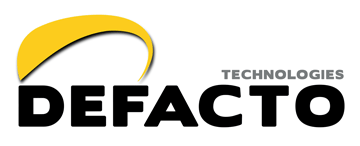In the fast-evolving world of semiconductor design, chip designers are constantly on the lookout for EDA tools that can enhance their productivity, streamline workflows, and push the boundaries of innovation. Although Tcl is currently the most widely used language, it seems to be reaching its limits in the face of the growing complexity of chip designs. In these conditions, Python appears to be the wisest choice among the programming languages and APIs available.
Today, Python is used more and more frequently, especially by young design engineers. Python offers a wide range of advantages. In terms of usability, its ease of debugging and execution speed opens more possibilities compared to Tcl. What’s more, Python benefits from a very active community and a wide choice of open-source libraries. It therefore has a rightful place in the use of EDA tools, and continuing to use a dual Python/Tcl language is counter-productive for design workflows.
1. One Unified Design Environment
Using Python for semiconductor design means working in a single, unified design environment. Indeed, Python gives engineers access to a wide range of libraries, design tools, and frameworks within a single ecosystem. This integration simplifies the design process significantly. Engineers can achieve their goals without having to switch from one language or platform to another. With all tools available in one place, the workflow becomes more cohesive and efficient, allowing for seamless transitions between design, reporting, simulation, and analysis.
2. Ease of Learning and Use
Python’s simplicity and readability make it an excellent choice. Its straightforward syntax is easy to learn. It allows designers to focus on learning key concepts. Python also offers far more scripting possibilities than Tcl. This ease of use accelerates the learning curve, enabling engineers to quickly prototype and iterate on their designs.
3. Rich Ecosystem of Libraries and Tools
Python boasts a robust ecosystem filled with libraries specifically tailored for scientific computing, data analysis, and machine learning. Libraries such as NumPy, SciPy, and Pandas provide powerful tools for numerical computations, while TensorFlow and PyTorch can be leveraged for machine learning applications in chip design. This wide range of resources enables engineers to implement sophisticated algorithms and analyses without the hassle of integrating disparate tools.
Semiconductor chip design also involves analyzing large datasets and visualizing complex processes. Python provides robust libraries like Matplotlib and Seaborn for data visualization, helping engineers to better understand their designs and make data-driven decisions. This capability is crucial for optimizing chip performance and functionality.
4. Adoption in Academia and Industry
Python is now a commonly taught subject in higher education establishments. As a result, young engineers who are proficient in Python will be better prepared for the job market. Indeed, industry has also integrated Python into its design flows. Many companies are now specifically looking for candidates with Python skills, making it a valuable asset for career advancement.
5. Defacto’s SoC Compiler is 100% Python compliant
Defacto’s SoC Compiler provides a full support of all its capabilities with an object-oriented Python API. Indeed, Defacto made the choice two decades ago to build its software so that Python would be a built-in API, and today this allows many users to benefit from the power of this language. Defacto estimates that today more than 60% of its users switched to its Python API. Such switch enabled top Semiconductor companies to better integrate new Defacto’s SoC Compiler-based application into their SoC design environment, to develop new additional applications, to fit into general corporate decisions of using Python in EDA, and more.
Defacto engineers are also providing a close support to its customers to help migrate from Tcl to Python API and to build custom Python-based applications.

A typical case study using the Defacto Python API is the generation of RTL code with open-source libraries to help generating and building a complete SoC at RTL.
Figure 2 below illustrates an example of a design environment for RTL code generation by using open-source libraries (like Chisel) and Defacto’s SoC Compiler which provides the capabilities to edit and build top level subsystems and SoCs. This ONE-STOP design and debug environment 100% python-based increases design efficiency for SoC architects and RTL designers.

Python is the future of EDA industry. With this two decades maturity of providing Python API, Defacto’s SoC Compiler is a strong weapon to build next generation SoC build flows.

